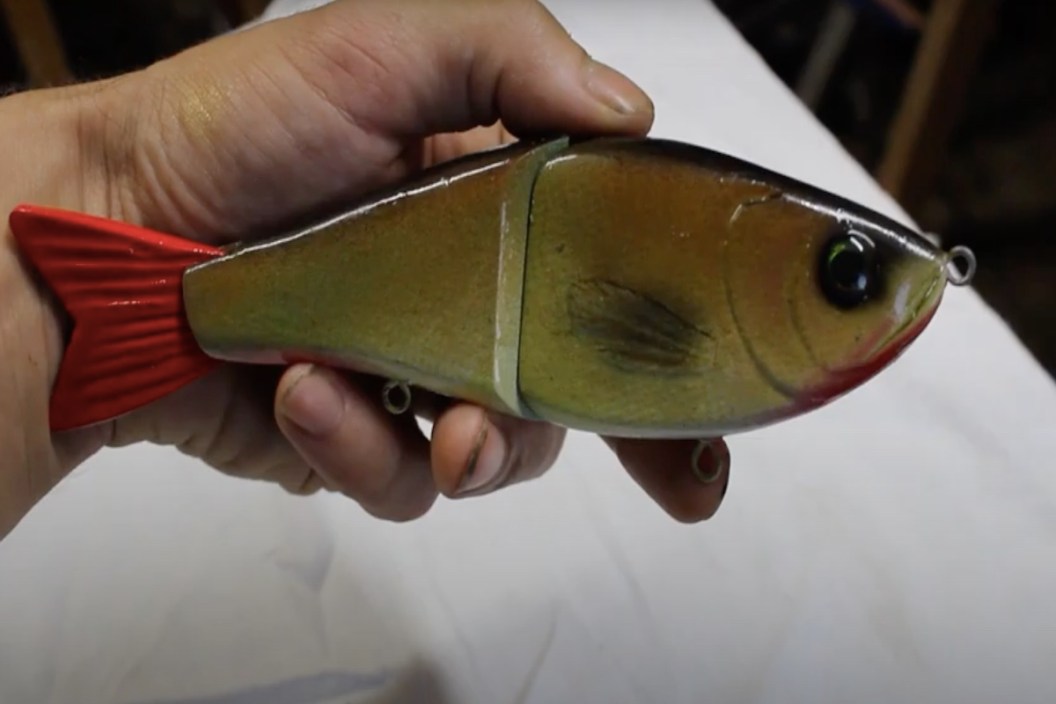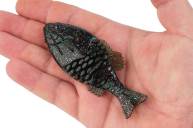Not all baits and lures are created equal. And the price tags on some would prove that true; some can cost you a pretty penny. As we've all learned over the years, one of the most effective baits for largemouth bass out there is the swimbait, bar none. We may all want a tackle bag full of swimbaits, but our wallets would see the effects. We aren't against paying some hard-earned money for today's best gear, especially when it can be so productive. It's just that it can be a little hard to justify , which is one of the greatest reasons why enterprising fishermen and women have taken to the workshop in an effort to create (or recreate) the baits that can catch fish. With that in mind—and with all due respect to the manufacturers—we've come across some good ways to craft our own swimbaits. Since the DIY community has always been strong in the fishing and hunting communities, there are some great sources for the materials and the instruction. If you're one of those who love to make your own gear, read on for some swimbait-making pointers.
Birth of the Swimbait
As far back as the late 1980s, swimbaits began to show up in parts of Southern California around such areas as Lake Casitas, Castaic, Lake Pyramid, and other reservoirs that had a knack for producing big fish, particularly largemouth bass. The original swimbaits were made to mimic stock-sized rainbow trout that were placed in the waterways as a part of the planned process to make a solid trout fishery. But when fishermen saw how voraciously the largemouths were chomping on them, it was only a matter of time before someone modeled a bait around the idea.
First it was the AC Plugs that made their way onto the scene, and then in 1993 a man named Mike Shaw began producing the MS Slammer. Since that time, manufacturers have been coming up with more and more swimbaits to tempt both anglers and fish, but the biggest issue has always been the price. It can be daunting for the average angler to shell out big bucks for a bait that doesn't exactly promise longevity. Primarily for that reason, the homemade swimbait was born.
Different Types of Swimbaits
Many of today's most common swimbaits are made of soft plastic. They're molded lures (sometimes segmented) with a paddle tail or a lifelike version of an actual fish tail. There are also hard-bodied renditions of swimbaits, made of wood or plastic, that are more often than not segmented. Then there are glide baits, which are almost always two-piece, single-jointed swimbaits that typically have a more pronounced and wider S-shaped swimming motion in the water.
Whichever you prefer, swimbaits look good and work well in the right conditions. At times it takes some specialized tools, a little work, and some finesse to fish these baits correctly.
Making a Hard Body Swimbait
These can be made with wood, resin, or plastic materials, with wood probably being the easiest to work with for beginners. Using any of these materials involves some specific tools such as a bandsaw, drill press, and sander. Because of these requirements, a hard body swimbait calls for some upfront investments. Sure, you can do quite a bit with hand tools, but it is a whole lot easier to create a swimbait when you can take some of the handwork out of the equation. As shown, you will need to draw out the outline of the design you are considering, cut it out of the wood, sand it down to a reasonable size and shape, and then carve it into the final shape.
Another great tool to have on hand for this process is a Dremel tool to help carve into small areas. You will need to seal the wood by waterproofing it, which can be done a couple different ways. Then paint it, working to mimic the forage fish you know to be inhabiting the waters you fish. Add a few eye hooks to hold the segments together and attach the treble hooks, and you've just made your first swimbait.
Making a Soft Plastic Swimbait
This in-depth video goes from start to finish, beginning with the mold itself. Not everyone may want to start by making their own mold from scratch, but rest assured you can buy the mold readymade.
From there, it is a simple task of buying the liquid plastic, (usually plastisol) plastic colorant, glitter, and any extra items such as the eyes. For most, hooks and hook size decisions come later when it is time to use your new plastic swimbait.
The entire process is fairly easy to learn and have fun with, although you will probably find that it still takes some practice and fine-tuning to get your homemade baits to look and perform the way you want. One good tip is to save any old plastics, as they can generally be reused in the future. If you're reusing soft plastics, the money saved will multiply quickly.
While there is a world of difference between soft-sided swimbaits and the hard sided version, they both have proven fish catching abilities that can't be denied. If you're making your own, the payoff will be all the sweeter.
Commit to creating your own fishing baits, and you might just find that you've solved the equation that nearly every angler tries to solve: what are they biting, and how can I get in on that bite?
Please check out my book "The Hunter's Way" from HarperCollins. Be sure to follow my webpage, or on Facebook and YouTube.




